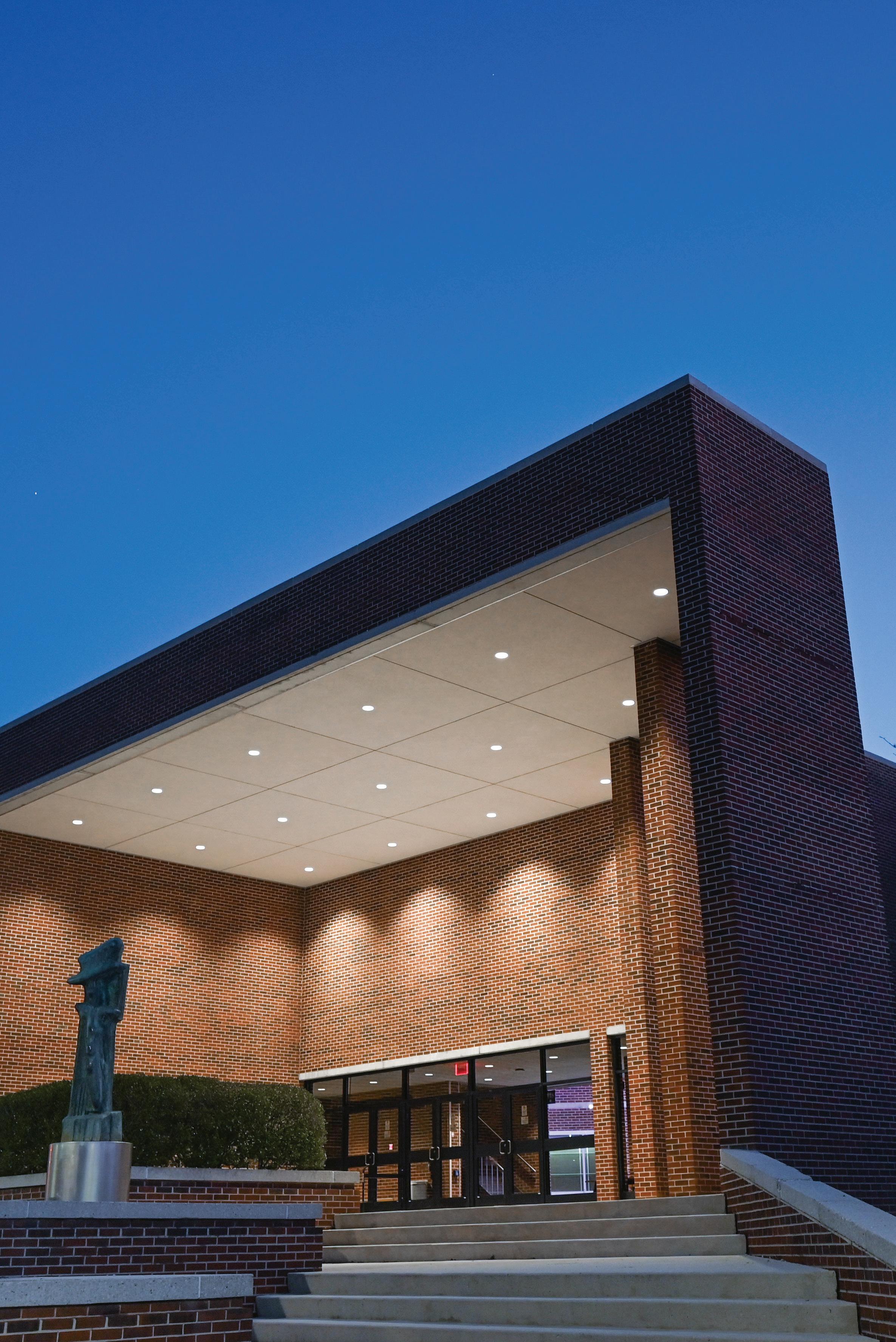

The Department of Art at The University of Tennessee at Chattanooga
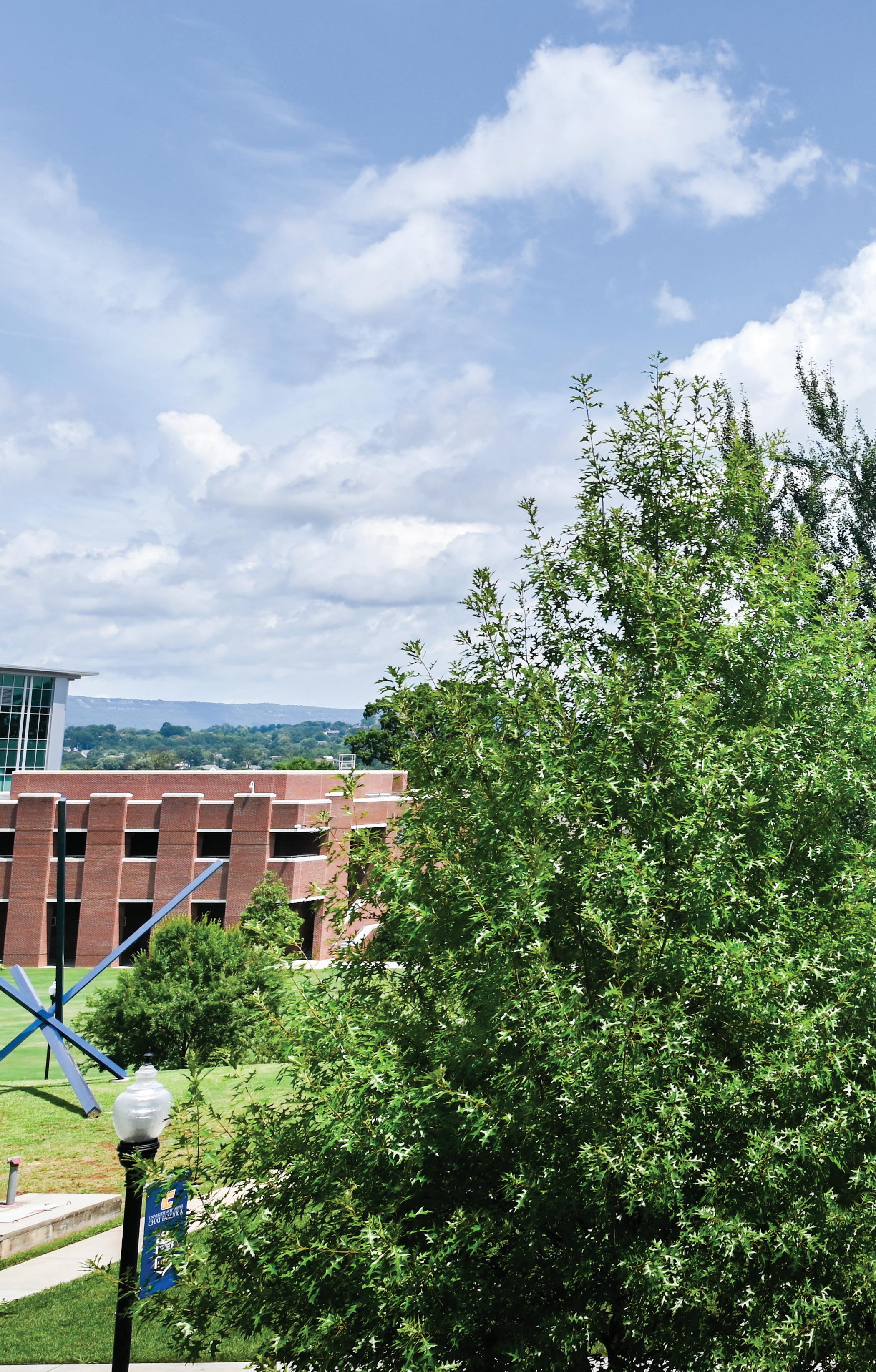

Bretske Hall Campus
photos provided by Angela Foster
The mission of UTC Art is to offer an accessible, rigorous, and supportive learning environment that exposes our students to a wide range of creative processes and intellectual models for contemporary practice. We guide our students as they strive to meet their individual goals, preparing them for successful futures in diverse fields. As art has power and is woven into all aspects of the world around us, we aim to nurture diverse voices through our curriculum, programming, pedagogy, and community engagement.

Core Beliefs
» Mentor-based instruction and individualized attention promote self-confidence and growth.
» Every student should have access to an education in the arts, regardless of class, age, race, gender, or ability.
» Critical engagement is essential, and requires an awareness of history, contemporary practice, and criticism.
» Through community building and collective support, artists have the power to affect positive change.
» There is intrinsic value in a liberal arts education and an education in the arts.
» Classrooms and studios are sacred spaces—devoted to openness, multiple perspectives, and mutual respect.
» Risk-taking, rigor, and hard work are essential to discovery and the long-term success of one’s professional practice.

Foundations students collaborate in class

UTC Art conceives of material engagement, process, critical thinking, and context as cornerstones of an education in the arts. This emphasis ensures the success of our graduates in meeting their professional objectives, entering competitive graduate schools in the fine arts and securing professional placement in their respective fields.
The UTC Art faculty is noted for teaching excellence, as well as for diverse and accomplished research activities. All of our faculty are working artists, designers, and active researchers in their respective studio areas, in the history of art, in art education, and in contemporary critical theory. Accreditation by the National Association of Schools of Art and Design mandates that our facility is safe, that our faculty are well qualified, and that our curriculum meets or exceeds national standards.
This program was a perfect fit for me because it has the balance of being small enough to get plenty of one-on-one attention while also having access to enough resources to experiment with any materials I am interested in. I have made life-long connections and the best friendships of my life during my time in this program.
Natalie Jo Church, BFA Art: Sculpture, Class of 2022
material engagement
The work of art might be defined as thought rendered in material form. Learning to manipulate a variety of materials and media remains fundamental to artistic training. UTC Art students gain competency with a wide range of tools, materials, and techniques. They learn to appreciate the inherent qualities of the media they use through hands-on, open-ended experimentation. The artist knows that mastery entails much more than control and they must simultaneously guide and be guided by their material.
process
Artists work methodically and with great discipline in pursuit of their goals, but since the final outcome is often unknown, it is the process that shows the way forward. UTC Art students learn to break a problem into manageable parts and to pursue its solution in a series of stages, from research to ideation to development to revision. Even failure is valuable, since it promotes divergent thinking and points toward possibilities. Very few habits of practice are more important than a robust and inquisitive process, and UTC Art students learn to follow their curiosity to discover the novel, the unexpected, and the unique.
critical thinking
Pursuing a degree in the arts demands an investment in an education that transcends simply gathering information or mastering technique. Knowledge and skills are put to use by the student—cultivating intellectual virtues such as criticality, humility, and insight. UTC Art conceives of critical thinking as an active, intellectual, and emotional commitment to learning.
We promote independence, accountability, and a sense of purpose, and as such, we expect students to determine the parameters of their own creative research relative to their field.
context
Art is given meaning through use. Even in a literal sense, works of art circulate, moving from studio to exhibition space, from print to web, from museum to periodical. Every artistic gesture is connected to a larger conversation. UTC Art students study the history of art in depth. They acquire the analytical tools to interpret art and its relationship to historical and contemporary cultural events. Studio classes position contemporary art practice as an integral part of a broader cultural discourse.
My professors know me by name, urge me to push my ideas so far that they’ll break, and show me how to reassemble them in a way so that they will function— something that sounded unattainable at my previous institution.
Mollie Johnson, BFA Art: Graphic Design,* Class of 2022
* now titled Design Research & Practice


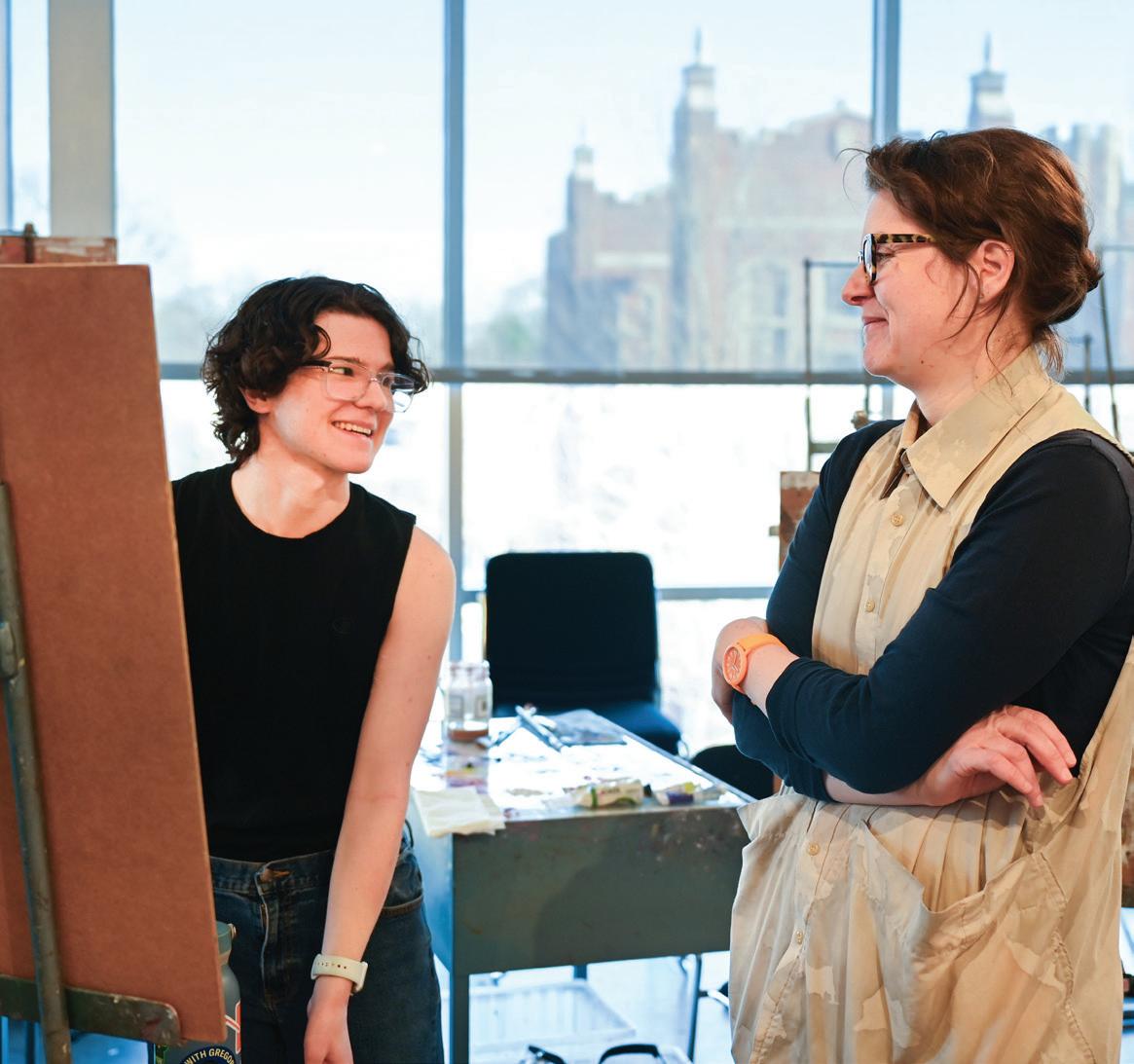


Students work in studio courses (clockwise from top right): Figure Painting, Photography I, Space and Sequence, Sculpture I
admissions & scholarships
For Freshmen
Students entering the Department of Art who wish to pursue a BFA in a studio concentration, a BA in Studio Art, a BA in Art Education, or a BA in Art History can declare those majors upon admission. Students who declare the BFA in a studio concentration must pass the department’s Portfolio Review (see blue sidebar) in order to continue in the BFA program.
For Transfer Students
UTC Art participates in the Tennessee Transfer Pathway (TTP) program to provide a path to a bachelor’s degree beginning at an eligible Tennessee community college. The time to the completion of your degree will vary based on the credits you transfer in and the degree program you intend to pursue.
Students who wish to transfer into a BFA program at UTC must take or have equivalent credit for our Foundations-level courses (information about these can be found on our website at utc.edu/art). UTC Art will also accept equivalent credit for the Art History survey sequence.
Transfer students seeking a BFA must undergo the Portfolio Review that takes place in the spring semester.
Except by special permission of the Department Head, transfer credits will not be accepted for the following sophomore-level courses:
» Design Research & Practice: ART 2601 Visual Literacy for Design and ART 2611 Introduction to Typography
» Painting & Drawing: ART 2070 Painting I and ART 2080 Painting II
» Photography & Media Art: ART 2810 Photography I and ART 2820 Photography II
» Sculpture: ART 2330 Sculpture I and ART 3360 Sculpture II
Students pursuing one of the department’s BA degrees do not need to complete the Portfolio Review. For students transferring into the department with no art credits from another institution, please see “Changing Majors” on the following page.

Changing Majors
The Department of Art has a sequential program that requires students to begin in the fall or spring of the first year in order to complete a degree in four years. This sequence begins with studio and art history survey courses that are then prerequisites for all of the coursework that follows, regardless of the degree concentration. From there, students move through concentration requirements according to a clearly articulated four-year programmatic plan. This means that students who change majors to a BFA or BA program will need to enter at the introductory (freshman) level regardless of how many credits at UTC they may have obtained toward another degree path.
Scholarships
During each spring semester, UTC Art holds a competition for scholarships, awards, and stipends for rising juniors and seniors. These departmental and college-level awards include a series of memorial and endowed scholarships. Scholarships are awarded by UTC Art faculty based on a combination of artistic merit and departmental citizenship.

Portfolio Review
Portfolio Review takes place in the spring semester and is required of all BFA candidates. The review is a formal assessment of the student’s overall performance as it pertains to the student’s designated degree and concentration. The review provides students with an assessment of their potential for success in the intended area of study early enough to allow them to make a program change should that be advisable.
Students who do not satisfactorily complete the review will be unable to enroll in some departmental upperdivision courses (3000and 4000-level) except by special permission of the Department Head. In consultation with their academic advisor, students may re-apply for admission into the BFA by retaking Portfolio Review one more time. Alternatively, students may choose to pursue one of the department’s BA degrees, which have no Portfolio Review requirement.
Students work in the Fine Arts Center’s woodshop



building your foundation
First-Year Foundations
Foundations is a year-long sequence of courses taken your first year in the Department of Art; it is required for all incoming students seeking one of the BFA studio concentrations (Design Research and Practice, Painting and Drawing, Photography and Media Art, Sculpture) or BA degrees (Art Education, Art History, Studio). The UTC Art faculty have designed this sequence of courses with students’ success in mind. Students are provided with hands-on experience in several materials, methods of creative practices, and processes that are traditional and experimental. Students will develop essential skills of analyzing, writing, and speaking about art and visual media; develop an understanding of the various disciplines; and begin to build personal research and idea generation techniques. Most importantly, Foundations provides a supportive environment for developing responsible and rigorous working habits required for success at UTC and creative professional fields alike.
The UTC Department of Art is unique in the way they ease you into an art program. As a transfer student, I was still required to take all of the entrylevel Foundations courses. Looking back, those courses are essential to having a base knowledge of different art mediums and networking with students outside of your program.
Chelsey Paige, BA Art History, Class of 2021
BFA Art: Design Research & Practice
Design has a direct impact on culture at large by shaping the form and the contexts for our relationships with one another. At UTC, students develop the pragmatic formal and technical skills to practice design effectively, and are also expected to continually consider the broader socio-political contexts within which design operates and is defined. This helps students clearly articulate the decisions they make throughout the creative process. Through this, our students begin to practice design with curiosity, reflexivity, and conviction.
Students leave the program with the ability to select appropriate design methodologies to approach and analyze problems, demonstrate their communication skills (visually, verbally, and in writing), and above all, to identify and adapt to changing contexts and needs. It is this very adaptability that we work to instill in our students, the trait that is most often cited as a differentiating factor in favor of our students when applying for professional positions or for graduate study.
* Note: If you are transferring into UTC, a BFA will require a minimum of three additional years due to the sequential nature of the degree. There is more flexibility in the BA degree, and one can often finish in two years after transferring into UTC Art.
BFA Art: Sculpture
The field of sculpture is continually expanding to encompass innovative materials, emerging technologies, and new discourses that engage critical issues across disciplines. Traditionally grounded in three-dimensional representation, sculpture and its contemporary practice evolves in step with cultural, technological, and political shifts around the world.
The Sculpture program teaches students to engage the physical world through a range of approaches with a focus on material exploration and conceptual intent. Students develop a strong knowledge of fabrication processes in both traditional and nontraditional media and investigate contemporary concepts including installation, performance, interdisciplinary strategies, and emerging forms. Sculpture students in the upper division contribute to the evolving discourse of the field through a series of specialized courses and the development of independently driven studio work.
BFA Art: Photography & Media Art
Photography and media art have always had a direct and visible relationship to changing technology, cultural shifts, and industry roles. Courses in the Photography and Media Art (PMA) program at UTC are in place to respond to, capture, and stay current in a discipline that remains in constant conceptual and technological flux—ensuring an active place for interdisciplinary practice within the curriculum.
The PMA program is centered around creative imaging and time-based arts. With a strong foundation in photographic imaging and digital media, students at the upper division may choose to focus their individual interests in photography, video, sound, and new media. At the upper division, independent studio practice is complemented by PMA coursework that explores web-based art, bookmaking, interdisciplinary research, physical computing, and other new forms of photo-media production and expression.
BFA Art: Painting & Drawing
Students interested in a BFA degree must pass Portfolio Review before they can be admitted into their desired program. See page 11 for more information.
Painting has never been more vital than it is today as a vehicle for understanding and interpreting our world and contributing to its visual culture. The Painting and Drawing curriculum simultaneously emphasizes painting’s rich history and the limitless possibilities of contemporary practice. Our students develop technical facility and an appreciation for materiality, a sensitivity to qualities particular to paint––including light, color, surface, and touch––and working knowledge of the primacy and extreme flexibility of drawing. At the same time, students learn to make intentional formal decisions to support their ideas.
The Painting and Drawing program prepares students to become practicing artists. Through individualized instruction and access to studio space, students are guided by faculty to form convictions about their work, develop research priorities, and determine their own positions within the expansiveness of contemporary practice. Upon completion of their studies, our students are prepared for professional life, they have forged distinctive studio practices, and they are empowered to make their own contributions to the field.
ba degree programs*

Students pursuing a BA are not required to participate in Portfolio Review (see page 11) and they do not have a capstone project. BA degrees do require students to complete four semesters of foreign language and/or study abroad.
BA Art: Art Education
The BA in Art Education is rooted in a fine arts curriculum that prepares students for teacher certification in the state of Tennessee. Our curriculum provides students with a broad range of studio skills, study in the history of art, and invaluable student teaching experience in collaboration with the UTC School of Education. It is an excellent program for individuals whose love of artmaking intersects with the ambition to teach.
The Art Education major also leads to professional opportunities in less conventional career paths including museum studies, work with recreational programs, senior centers, and hospitals—providing exciting career paths for individuals who recognize the value of the visual arts in people’s lives.
* Note: If you are transferring into UTC, a BFA will require a minimum of three additional years due to the sequential nature of the degree. There is more flexibility in the BA degree, and one can often finish in two years after transferring into UTC Art.
BA Art: Art History
The BA in Art History develops students’ ability to understand and interpret their visual world. Focusing on human artistic production made across the globe from prehistory to the contemporary moment, the BA in Art History explores how different types of art, architecture, and other visual materials engaged their particular historical, religious, socio-cultural, theoretical, and formal contexts. Students learn to approach visual materials in a critical and inquisitive manner, and to analyze the influence of major artistic movements and concepts. Students also learn to write and speak confidently and cogently about their own visual interpretations and to conduct advanced research in specialized areas of emphasis. The concentration’s core courses examine the broad themes of global art and visual culture, while upperdivision courses expose students to a variety of more focused explorations of specific geographic regions, temporal periods, critical methodologies, as well as museum and curatorial studies. The BA in Art History provides ideal preparation for work in museums, galleries, auction houses, and other research-focused careers, as well as graduate programs in art history.
BA Art: Art History, Class of 2020
Alyson McGowan,
I have had the opportunity to work with very supportive faculty members who have helped me refine my research, and better prepare me for graduate school and work within this field.

facilities & studios

Facilities
The Department of Art maintains extensive studio facilities and state-of-the-art equipment in five buildings across the UTC campus. The Fine Arts Center serves as the primary hub of activity along with Bretske Hall, which is our center for Foundations programming. UTC Art has three Mac computer labs with the full Adobe Creative Cloud suite, 3D modeling software, and coding applications. Digital output includes several 24” and 44” Epson professional inkjet printers along with a 3D printer, a laser cutter, and CNC router. UTC Art also maintains a fully equipped wood and metal shop and a large outdoor sculpture yard. Students have access to a professional lighting studio with tungsten, LED, and strobe lighting equipment that supports still imagery and video work. Photo and video equipment available for checkout includes digital SLR cameras; 35mm, medium format, and large format film cameras; as well as gimbals, stabilizers, drones, and 4K video cameras. A newly renovated and expanded darkroom allows students to work in analogue black and white photographic processes.
BFA Studios
The centerpiece of the BFA program are the private and shared studio spaces for third- and fourth-year students in their respective concentration areas. These dedicated spaces for undergraduate research and creative production are unique regionally and nationally in that they provide students with their own space for long-term projects and experimentation. This resource mirrors contemporary practice, allowing students to conceive of themselves as emerging artists guided by regular studio visits, critiques, and faculty mentorship.
The studio allowed me to teach myself to be a self-sufficient, independent thinker. I was taking what I was learning in class and digesting that in the studio but also furthering my own work in a way that was limitless. Introducing the studio was critical as it allowed my peers and I to test the waters of what it meant to be a working artist.
Kirby Miles, BFA Art: Painting & Drawing, Class of 2017
MFA, Cranbrook Academy of Art, Class of 2019


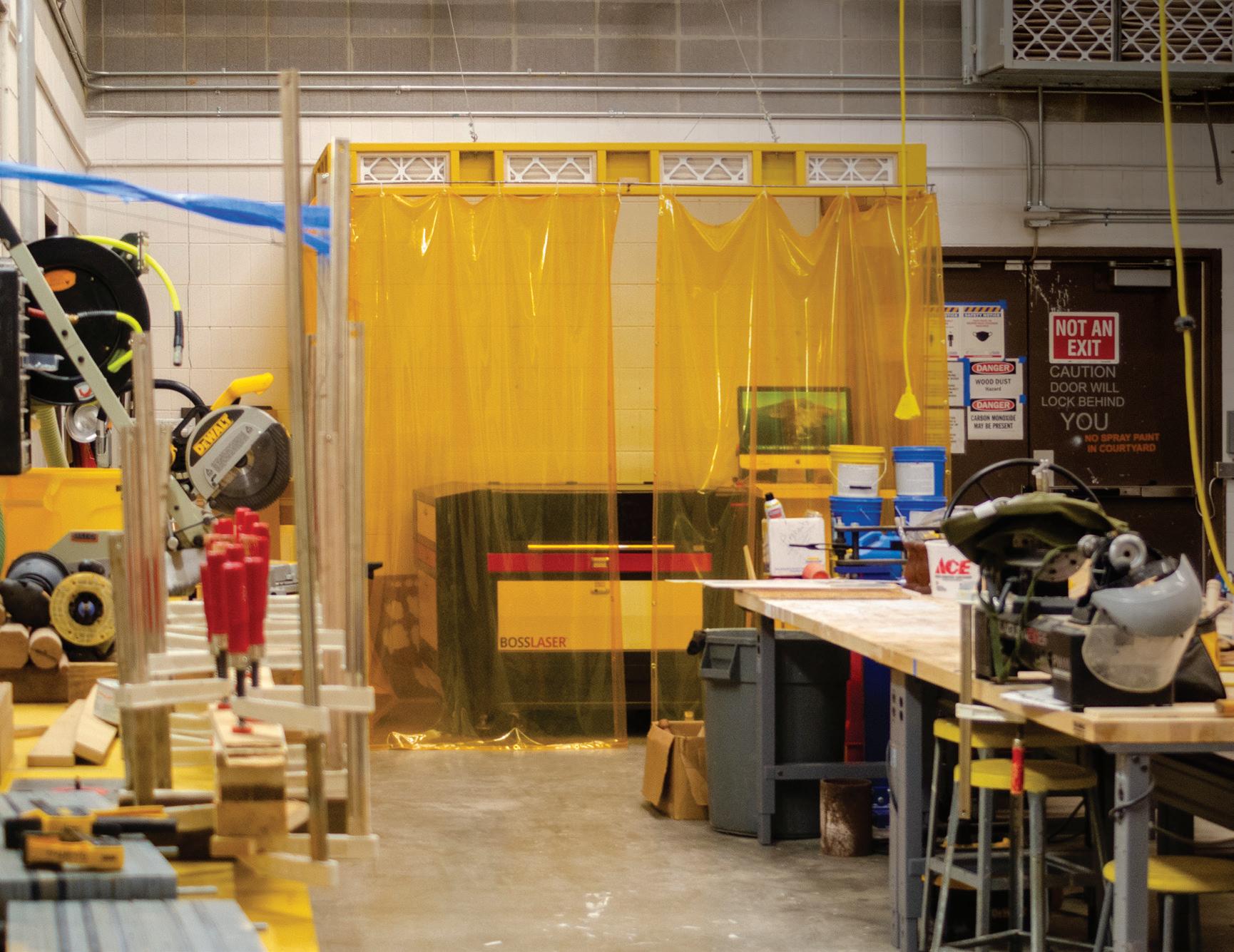

Painting & Drawing studio, Larkin Cook, BFA 2021
Woodshop
beyond the classroom
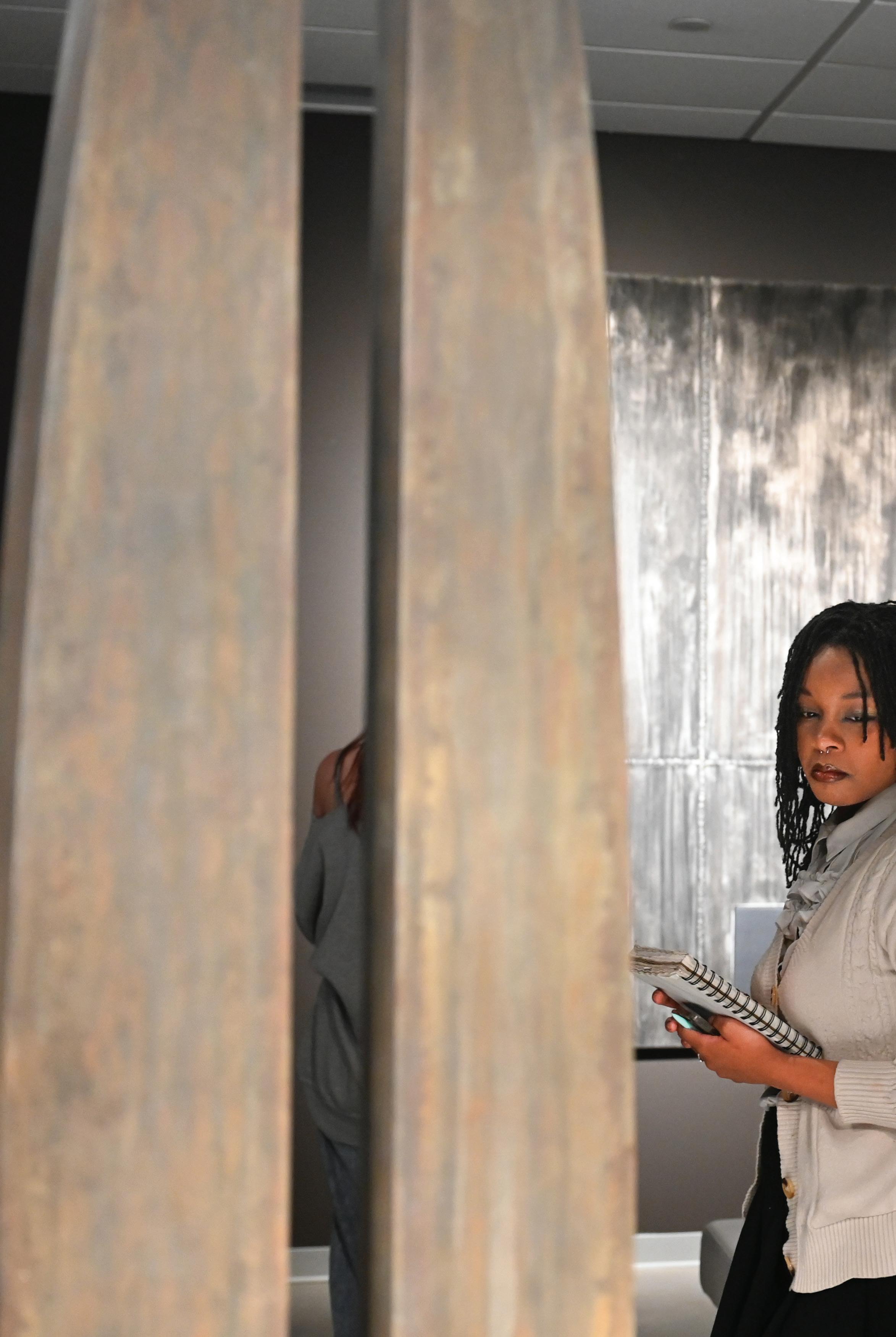
Experiential learning is at the core of an education in the arts, and we put this ethos into practice through a range of activities on campus, in the community, and at the national level. This includes preparing artwork for exhibition and learning curatorial practices, developing collaborative projects with regional businesses and nonprofit organizations, traveling to conferences and arts destinations, and identifying internship and freelance opportunities for current students and recent graduates. Together, these activities enable students to see their research and creative skills put to use in a wide range of contexts as they chart their career path.
Institute of Contemporary Art
The Fine Arts Center is home to the Institute of Contemporary Art (ICA), which presents challenging, curious, and adventurous encounters with contemporary art and artists. The ICA supports a year-round exhibition schedule including temporary special exhibitions with visiting contemporary artists and exhibitions featuring works from UTC’s permanent collection of art. The exhibition schedule also includes opportunities for our students to present their work in a professional setting, including our annual BFA Thesis Exhibitions, the Feinstein Scholarship exhibition, and the annual juried student exhibition. The ICA provides exposure to work by both well-known and emerging professionals, giving our students the opportunity to conceive of their practice in conversation with the work of contemporary artists and designers. Art majors can also get involved with the ICA as a part-time campus job; eligible students can take advantage of federal work study opportunities to work as ICA Gallery Ambassadors.
Visit us online at utc.edu/arts-and-sciences/ica
Apothecary
Named after its original location in Chattanooga’s historic Doctors Building, Apothecary is a contemporary arts project space supported by the Department of Art and operated entirely by UTC Art students. While the physical space has shifted, we have stayed rooted in Apothecary as a name and concept. Having access to an experimental gallery space allows students to learn professional skills including the design, installation, and promotion of art exhibitions— invaluable experience for those who plan to enter the fields of curatorial practice or museum studies.
Students visit the ICA to see Groanings Which Cannot Be Uttered, a solo exhibition of work from Reginald Sylvester II

UTC Art regularly invites practicing artists, designers, and scholars across diverse fields to share their work and expertise with students. Some recent guest speakers include:
TABITHA ARNOLD textile artist, Tennessee
WILLIAM CAMARGO photographer, University of California - San Diego
DR. CECILIA FAJARDO-HILL art historian and curator, Arizona State University
ARI MELENCIANO designer and creative technologist, NYU
TRITON MOBLEY new media artist, University of Georgia
KEVIN MCNAMEE-TWEED artist, curator, writer, North Carolina
LIBBY PALOMA interdisciplinary artist, New York
KARTHIK PANDIAN interdisciplinary artist, Harvard University
KA’ILA FARRELL SMITH contemporary Klamath Modoc visual artist, Modoc Point, Oregon
REGINALD SYLVESTER II painter and sculptor, New York


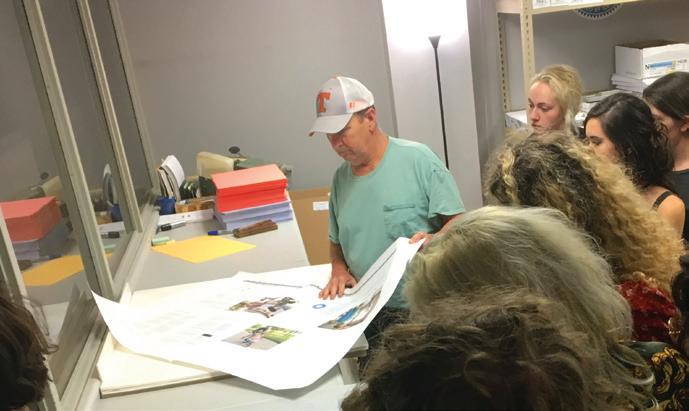

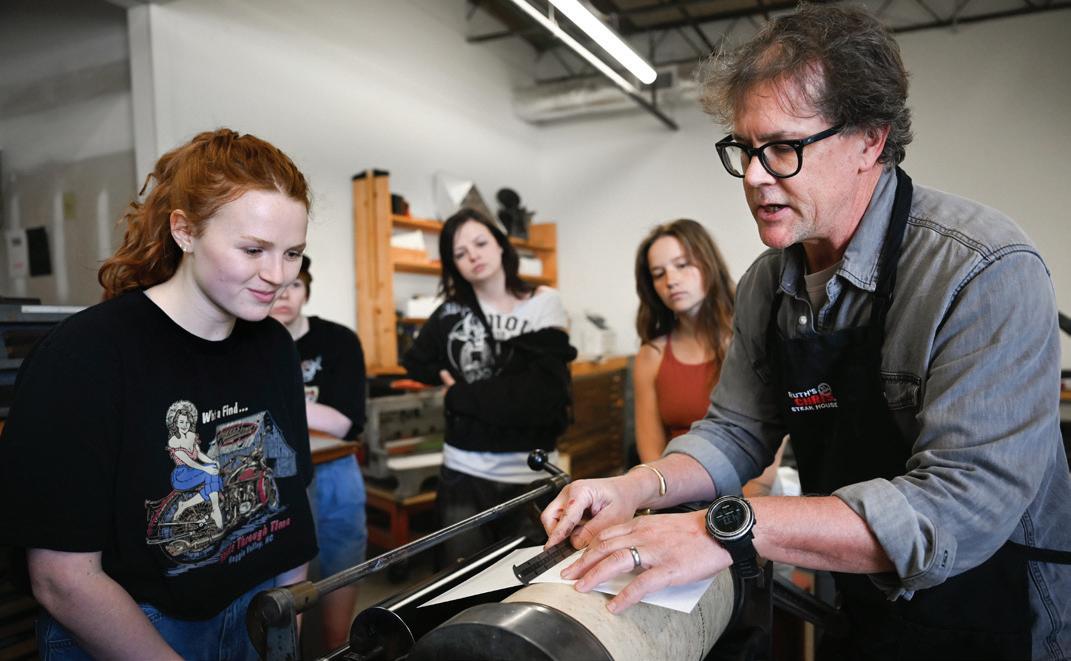

Internships
The Department of Art recognizes the importance of gaining professional experience while still in school and works with students to identify relevant internships related to art and design practice. Students seeking academic credit for an internship will work a minimum of 100 hours and receive a professional evaluation of their skills and competence. The department also supports internships in cases where students do not need academic credit. In those instances, we maintain a 20-hour-per-week limit to avoid negatively impacting a student’s academic performance. In either instance, the department strongly discourages unpaid internships as they devalue the skills of the student as well as the skills in their respective fields.


Students visit (clockwise from top left):
Special Collections at the UTC Library; Adams Lithography to learn about the printing process; Atlanta Contemporary; The Open Press, housed within local art space, Stove Works; Hunter Museum of American Art
looking ahead
While everyone’s experience in UTC Art will be different depending on their degree plan and interests, these highlights can provide an overview of one’s year-to-year development as an Art major.
Explore your interests and identify your strengths through ART 1000: Introduction to Contemporary Art Practices. Complete the Foundations core studio sequence. Get involved by attending UTC Art events. Build relationships with department students and faculty. Ask questions and seek support!
Consider potential career paths and begin to assemble a portfolio of work that reflects your interests. Visit the studios of upper-division majors in the studio arts and look for travel opportunities to exhibitions and lectures in the region.
Start talking to your professors about your career interests and begin to explore internship and other opportunities beyond the classroom. Get involved in departmental activities and events. Reflect on your experiences thus far to identify how you can tailor your final year of study to support both professional and intellectual growth.
Work with your peers and faculty mentors to identify your unique mix of abilities and experience as you make plans for after graduation. Rely on your network (your peers, your faculty, and your outside contacts) for leads and advice. Concentrate on building a professional portfolio highlighting your strengths and interests as you leave UTC and begin the next stage of your career.


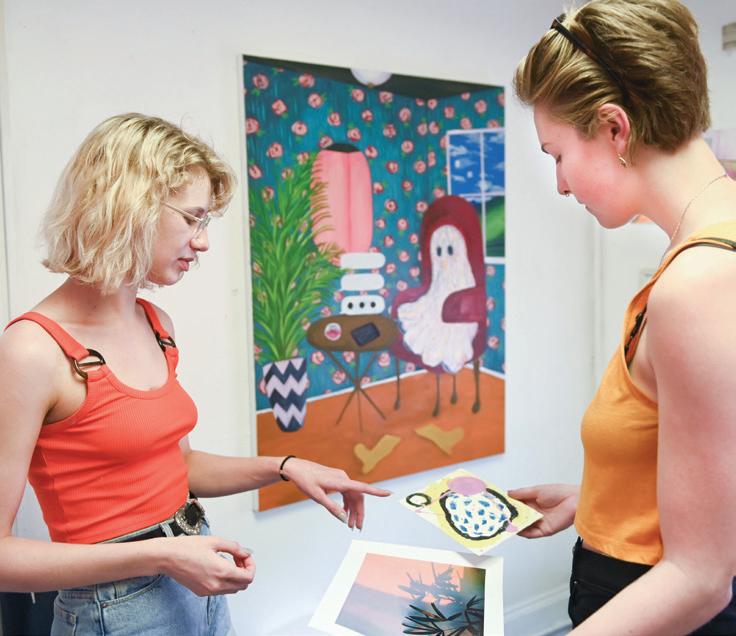

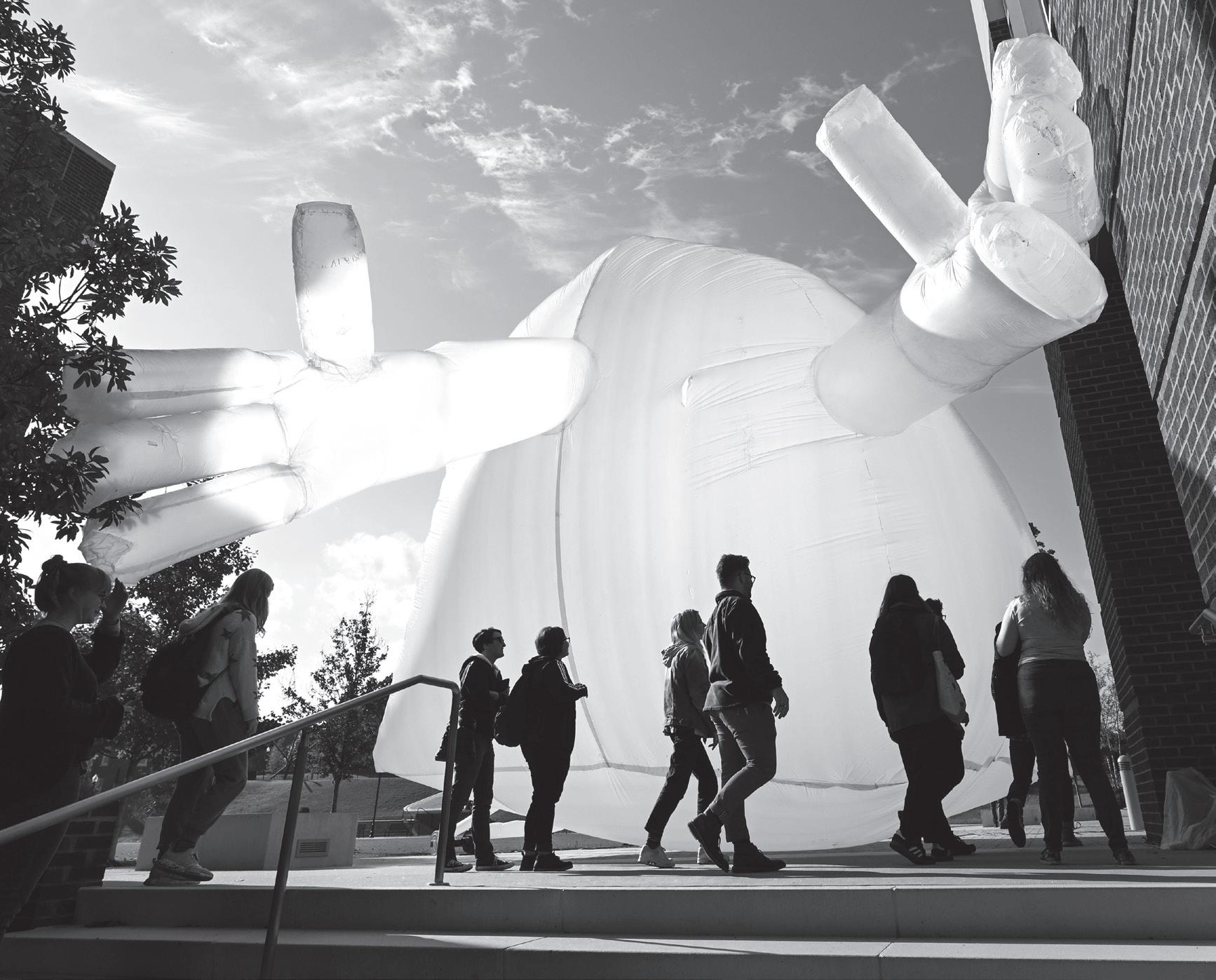
images from top: Art History students examine artifacts from UTC Library collections; Sculpture students install work on campus
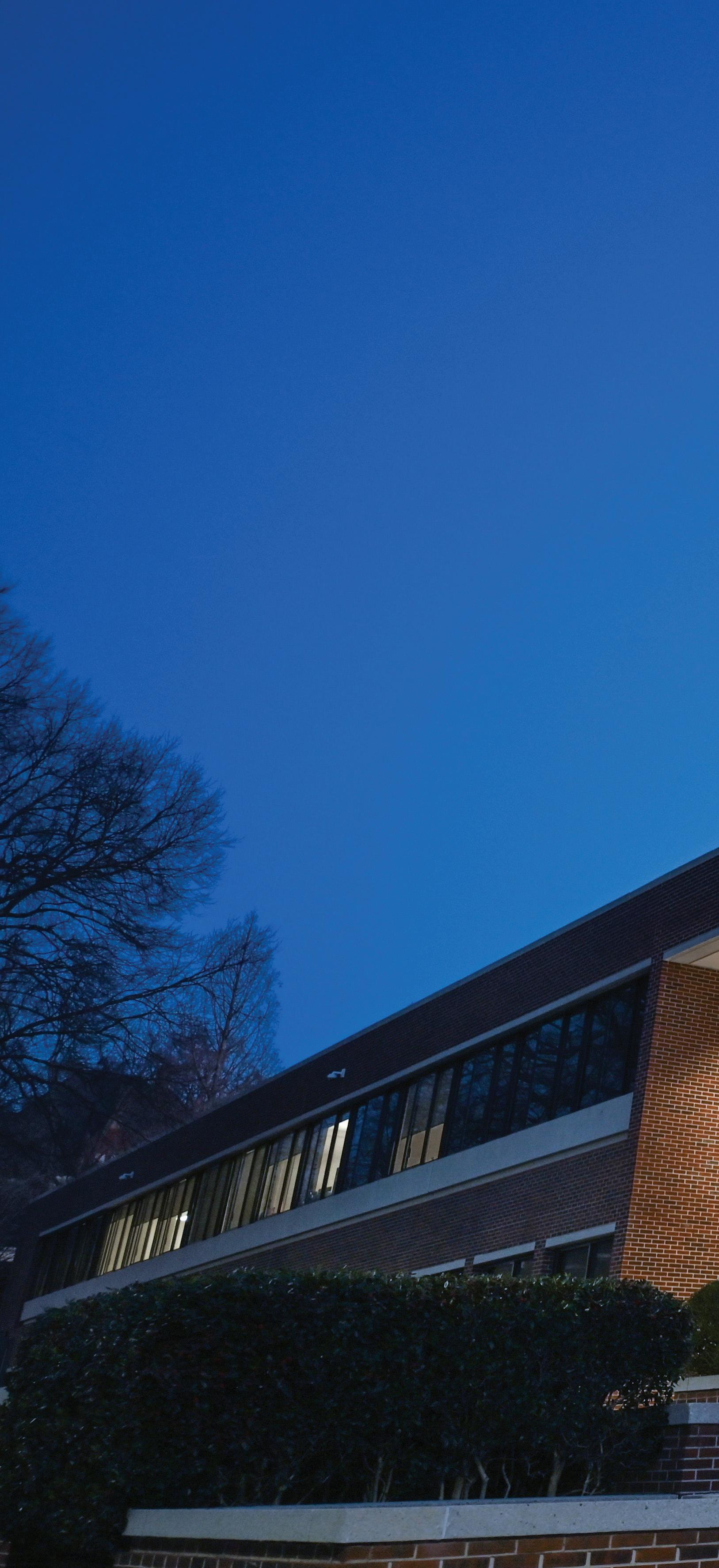
UTC is a comprehensive, community-engaged campus of the UT System. UTC is an EEO/AA/Titles VI and IX Section 504/ ADA/ADEA institution.
